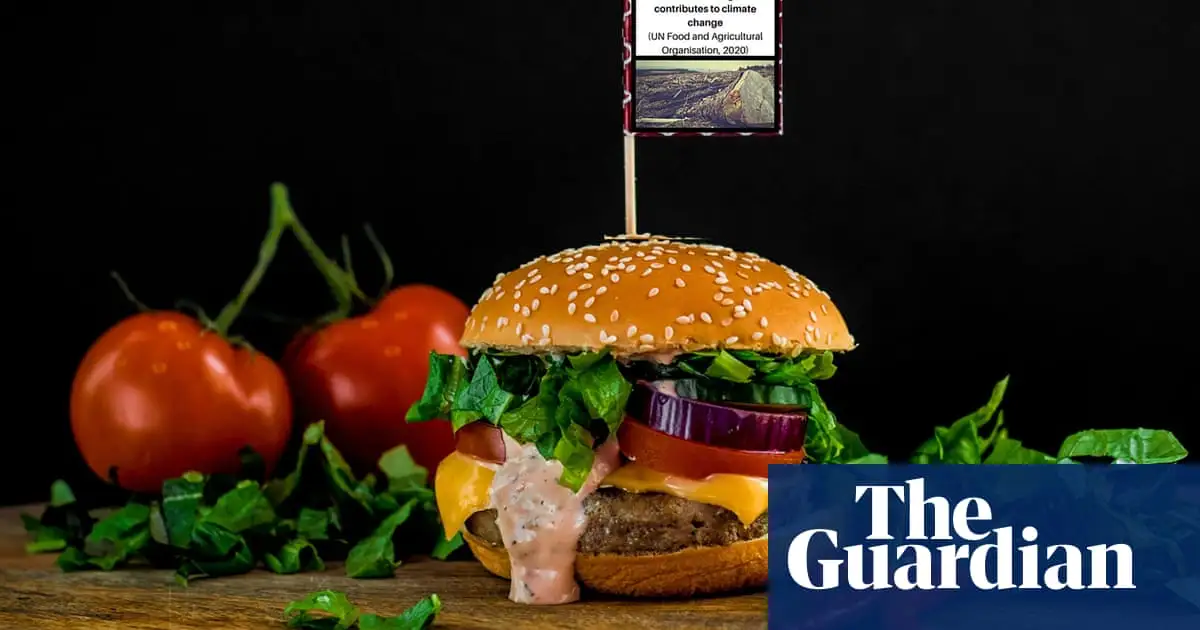People are used to seeing stark warnings on tobacco products alerting them about the potentially deadly risks to health. Now a study suggests similar labelling on food could help them make wiser choices about not just their health, but the health of the planet.
The research, by academics at Durham University, found that warning labels including a graphic image – similar to those warning of impotence, heart disease or lung cancer on cigarette packets – could reduce selections of meals containing meat by 7-10%.
It is a change that could have a material impact on the future of the planet. According to a recent YouGov poll, 72% of the UK population classify themselves as meat-eaters. But the Climate Change Committee (CCC), which advises the government on its net zero goals, has said the UK needs to slash its meat consumption by 20% by 2030, and 50% by 2050, in order to meet them.



lol but not on gas? Plastic?
Waste of money and time.
Not really. The meat industry makes INSANE amounts of GHG emissions. Whataboutism surely won’t solve climate change.
Calling something whataboutism won’t either. That’s just lazy and dismissive.
The CONSUMER is not going to make a difference. The change needs to happen on an industry scale.
Siiiigggghhhhh…
https://ourworldindata.org/emissions-by-sector
Energy production dwarfs everything.
Cattle don’t produce any emissions.
How so? Cow farts? The grass is going to emit the same gasses whether it decomposes in a cow stomach or in the dirt. I guess the solution to carbon emissions is to pave the earth! No more organics polluting everything.
Most cows eat soy which is produced on former rainforest grounds.
Additionally, we are better off eating/using what is produced on farmlands directly instead of feeding it to animals. That is much more energy efficient!
we do. what we feed to animals is mostly the parts of plants that people can’t or won’t eat.
That’s just not true lmao. 90% of soy production is for animals. Not humans.
lmao
85% of all soy is put into an oil press. the byproduct of oil production is called soycake or soy meal.
that makes up the vast majority of the soy that is fed to animals.
So… What i said? Lmao what trap card. Your source doesn’t say anything about “soy humans can’t eat”. It’s just normal ass soy pushed into soy cakes.
“soy cake” is the industrial waste from the production of soybean oil. exactly what i said. also, your estimate of how much soy ends up as animal feed was off by a lot.
85% of all soybeans are pressed for oil for people. that can’t be true if 90% of soy production is for livestock. but i have the facts on my side. i’ll accept your apology any time.
soy is my favorite example
you’ve activated my trap card
No cows in UK eat soy.
Also idk about you, but I can’t eat grass
cattle hardly eat any soy at all
Most importantly cement. Believe it or not it’s a huge chunk of pollution and requires a lot of energy to produce. Even funnier is the fact we do have eco-friendly cements but they are not being used because they are a bit more expensive and no demand.
Absolutely. Lots of places have building codes, this should be one of them. When the demand goes up, the price goes down. Don’t even get me started on car tires.